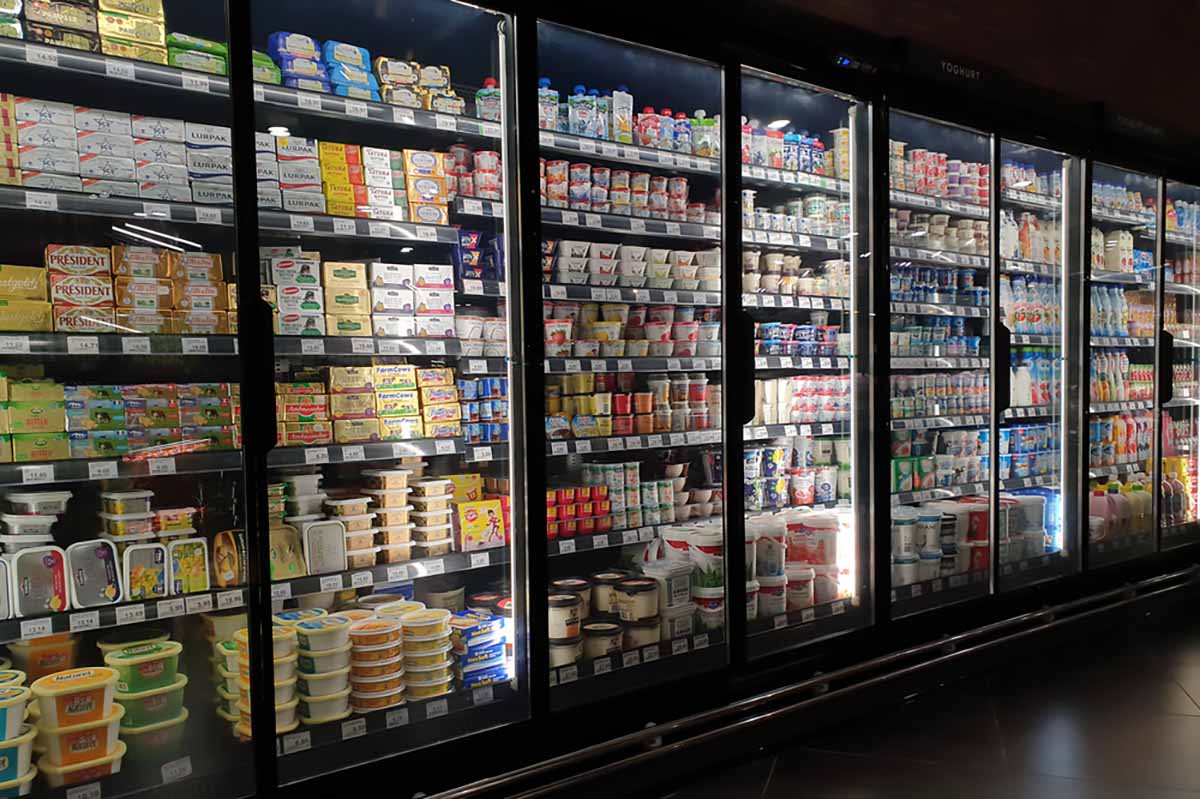
A group of 100 U.S. brand owners and other stakeholders have laid out a roadmap for achieving various plastics sustainability objectives. | AngieYeoh / Shutterstock
The U.S. Plastics Pact this week laid out its five-year plan for increasing recycled plastic use and boosting recycling rates, among other objectives.
The pact formed last year to bring together nearly 100 U.S. brand owners and other stakeholders that have committed to various recycling targets through the Ellen MacArthur Foundation. It is one of 11 global Plastics Pact entities with similar missions in different regions.
This week, the pact released a “Roadmap to 2025,” a 36-page document identifying individual steps and target delivery dates to achieve the pact’s four key goals: to define a list of problematic or unnecessary packaging and ultimately eliminate those products; to make 100% of plastic packaging reusable, recyclable or compostable; to recycle or compost 50% of plastic packaging; and to use an average of 30% recycled content or bio-based content in plastic packaging.
In effect, the roadmap offers a look at how signatories will achieve their stated plastics sustainability objectives.
Use an average of 30% recycled or bio-based content by 2025
Through the end of this year, pact signatories will analyze and examine model scenarios for achieving 30% post-consumer resin use, the roadmap notes.
By the end of 2022, all pact signatories will have “publicly stated post-consumer recycled content demand commitments specific to the U.S.,” according to the roadmap.
The pact will work to develop end markets for specific post-consumer plastic types, including films and flexible packaging.
It will also focus on policy. Signatories will “support post-consumer recycled content mandates and procurement policies in coordination with strong programs and policies like EPR and [container deposit systems] to assist the collection and sortation of recyclable plastic packaging,” the roadmap states.
Recycle or compost 50% of plastic packaging by 2025
First off, the group will adopt a “unified approach to reporting” on U.S. plastics recycling rates by the end of this year, the roadmap states. They’ll look at composting rate measurement by the end of 2022.
As part of this goal, the pact will support container deposit programs and extended producer responsibility (EPR) for all packaging materials, policy approaches the roadmap says are “supportive of system improvements to increase the quantity and quality of recyclables.”
The pact will work to stimulate investment in recycling infrastructure by the end of 2022, according to the roadmap. Signatories will work to support existing efforts prioritizing greater recycling and composting access through the end of 2023. They’ll also develop and assist with projects that can demonstrate options to increase recycling.
Define and eliminate problematic/unnecessary packaging
Signatories plan to create a U.S.-specific list of problematic packaging by the end of this year. By the end of 2022, they will develop and have in place plans for eliminating such defined materials within the subsequent couple years.
At the end of 2023, they’ll review the list of identified material types to ensure it’s still relevant.
Ultimately, signatories will complete their elimination of defined problematic and unnecessary items by the end of 2025.
Make 100% of plastic packaging reusable, recyclable or compostable
Throughout 2021, signatories will assess packaging formats and develop a plan to distribute design guidelines for packaging producers. These will incorporate design for recycling, design for multiple lives, design to produce high-quality recycled material at end of life, lightweighting guidelines, and more.
By the end of 2022, these guidelines will be disseminated to signatories and other stakeholders.
Additionally, pact signatories will review existing labeling practices with an eye toward efficacy and legalities – compliance with the U.S. Federal Trade Commission’s Green Guides, for example. By the end of 2023, the pact will “take steps to suggest improvements to existing labeling schemes or identify and implement suitable alternatives to reduce contamination in both recycling and composting” and will “advocate for wide-scale adoption of the agreed solution.”
Signatories will also work to ensure the pact has clear positions on a variety of policy approaches that support reuse, recyclability and more.
Role of chemical recycling?
During the virtual Plastics Recycling Conference in April, Emily Tipaldo, executive director of the U.S. Plastics Pact, was asked how chemical recycling would fit into the pact’s goals. Chemical recycling, sometimes termed advanced recycling, refers to a broad set of plastics conversion and processing technologies that aim to create the molecular building blocks of new resins from recovered materials, or to create products such as waxes and oil that have market value.
Tipaldo noted then the pact wasn’t ruling out any options but also pointed to the lack of widespread commercialization in the chemical recycling sector. She said her group has to be mindful of its 2025 timeline when prioritizing solutions.
This week, the American Chemistry Council (ACC), which has heavily promoted chemical recycling, took issue with the technologies’ absence in the roadmap document.
“Absent from the U.S. Plastic Pact’s roadmap is a recognition of the role that advanced recycling will play in ensuring more types of plastics are recycled and used again and again,” the ACC noted in a statement. “Breakthroughs in advanced recycling enable us to reduce waste by capturing the post-use value of notable plastics, like multi-layer pouches and film, mixed plastics and polystyrene foam food containers. And today’s advanced recycling technologies enable food, medical and pharmaceutical grade plastics to be produced from used plastics.”
The group also criticized the pact’s plan to define and phase out “problematic” plastic. ACC, which is not a signatory to the pact, wrote that product bans do not increase plastics recycling.
Numerous other recycling stakeholder groups, many of which are part of the Plastics Pact, issued supportive announcements in response to the roadmap document.
More stories about brand owners
- Ellen MacArthur Foundation sets 2030 plastics agenda
- Retailers launch CA campaign to ditch single-use bags
- New report explores the future of CPG packaging goals


